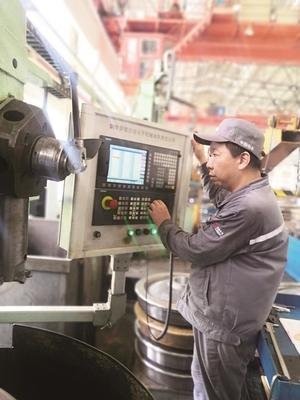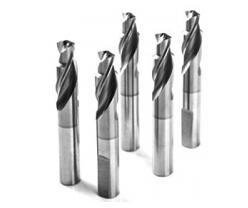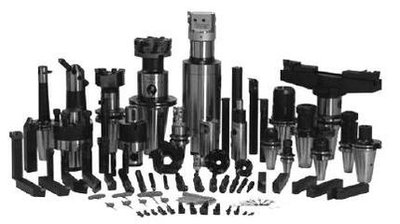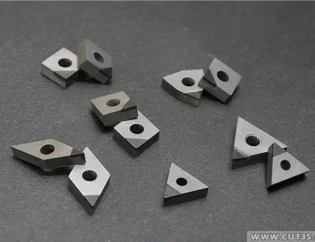
Application of Solid carbide Tools in Cylinder Block Processing
The cylinder block is one of the crucial components of an engine, made of either cast iron or aluminum-silicon alloy, each with different machining properties. For example, when machining gray cast iron, ductile iron, and high-density ductile iron, these cast irons exhibit different machining characteristics. Gray cast iron contains a networked hard structure, resulting in brittleness, making the tools prone to edge chipping during machining. Ductile iron and high-density ductile iron have certain plasticity, producing iron chips during machining, but there’s also the risk of workpiece burrs, leading to tool tip damage.
Success Case: Customer: a certain automotive engine manufacturing plant; Part Name: Engine Cylinder Head; Part Material: QT450HB230; Processing Equipment: Vertical Machining Center, Wet Machining; Processing Content: Rough Milling of Engine Cylinder Head Top Surface; Cutting Parameters: Vc=200m/min, f=0.5mm/r, ap=2mm; Experimental Result: Our company processes 80 pieces/edge, while competitors process 50 pieces/edge. Our company slightly outperforms in performance and offers better cost-effectiveness, gaining recognition from customers.
Application of Solid Carbide Composite Tools in Hole Machining Precision and Efficiency
When machining non-ferrous metals like aluminum alloys, diamond-coated carbide drills, DLC-coated carbide drills, or drills with diamond sintered teeth have been developed, significantly enhancing tool lifespan and dimensional accuracy of workpieces. Cutting Case Drill Specifications: Ø12; Material Being Machined: 42CrMo, Hardness HB250300m/min. High-speed drilling is a trend toward high-speed, high-feed cutting, similar to the development trend of ball-end milling cutter cutting conditions.

Application of CNC Solid Tools in Crankshaft Machining
Characteristics of Crankshaft Machining Today’s market demands smaller engines from automobile manufacturers while requiring higher power and speed, increasing the load and stress on crankshafts. Manufacturers continually seek stronger materials for these parts, usually including high-alloy metals. Ductile iron is the standard material for lower-load engines (mostly gasoline engines), while high-horsepower engines (including most diesel engines) use more expensive alloy steel forgings. The steel grades used for crankshafts usually undergo various heat treatments, such as quenching and tempering. In some special high-end applications (including racing), crankshafts may be machined directly from round steel. Due to the specific characteristics of crankshaft structure, most domestic passenger car crankshaft production lines are high-speed flexible production lines (FTL), which can not only process the same series of crankshafts but also variant products, generation products, and new products.

Crankshaft Machining Methods
A simple way to machine the ends and journals of a crankshaft is by turning on traditional lathes or turning centers. This obviously requires sufficient space between the tool holder and the machined journal surface. The benefits of this method include the ability to use standard machine tools, tools, and inserts for high flexibility and low cost. A dedicated machine tool with both turning and turning capabilities can machine the journals on the crankshaft rotation center. Cutting inserts for rough and finish machining can be installed on the same tool disc, completing a special-shaped cutting stroke in one go. Other benefits include repeatability, good machining surface quality, smaller tolerances, extended tool life, reduced tool change frequency for higher machine tool utilization, and reduced machining time, etc. The drawback of turning is the higher cost of dedicated machine tools and tools, as well as the need for a large number of inserts. A more specialized turning method is to use multi-tooth turning inserts to control chip breaking efforts and avoid turning actions.
Due to the special structure of engine crankshafts, most domestic passenger car crankshaft production lines are high-speed flexible production lines (FTL), which not only can process the same series of crankshafts but also variant products, generation products, and new products.
CNC Tool Selection for Crankshaft Machining
For machining the main journal of the crankshaft, CNC internal milling or CNC high-speed external milling should be preferred, while CNC high-speed external milling should be used for connecting rod journals. If the blank is forged steel, CNC internal milling is more conducive to chip breaking. CNC turning and turning should be avoided. Due to intermittent cutting on the side of the counterweight and high crankshaft speed (about 1000r/min), tool chipping is severe. According to the characteristics of our company’s products, we have significant advantages in the machining of crankshaft end face threaded holes, straight oil holes, and inclined oil holes. Currently, our company’s solid tools have been widely used in Shanghai Volkswagen, SAIC Motor, and General Motors.
Technical Processes Material and heat treatment of milling cutters
Milling cutter bodies and modules are made of carbide to increase the overall hardness of the machine body, thereby improving the tool’s lifespan. Inspection and fixtures for milling cutters. Products are tracked and inspected using a projector and ruby measuring head, and some fixtures are made.
The produced milling cutter profile tolerance is ±0.03mm, radial runout is 0.05mm, and end face runout is 0.04mm. Under cutting conditions with cutting speed V=150m/min and feed rate s=200mm/min, normal use is achieved. It can be seen that the designed milling cutter profile meets the user’s accuracy requirements and improves machining efficiency.
Conclusión
In conclusion, this blog elaborates on the technical level of Meetyou carbide Co., Ltd. in the application of CNC tools in the automotive processing industry, aiming to meet the increasingly high requirements of automotive processing. We must not only enhance the development capability of CNC tool technology but also increase research in automotive processing technology to improve our technical service quality.









